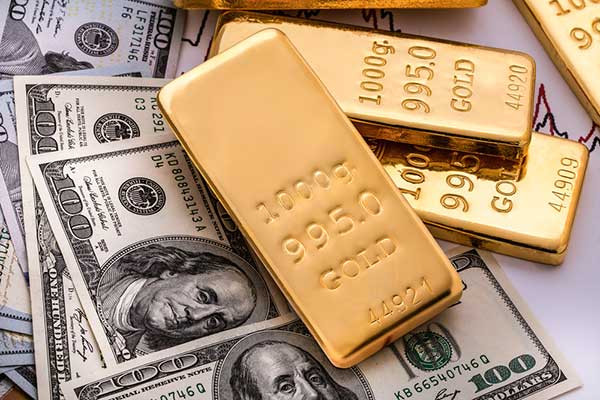Gold Prices Back Above $1,400
Wednesday, July 3, 2019 12:17:01 PM Europe/Tallinn

Gold is looking ready to re-start its bull run after five years of “caged trading,” which means the yellow metal could be looking at retracing its path to 2013’s peak of $1,700 an ounce, according to Bloomberg Intelligence (BI).
“Gold has worthy catalysts for price gains after five years of caged trading. It stands to be the primary beneficiary, absent a definitive U.S.-China trade accord that reverses accelerating global declines in sovereign-debt yields, rate-cut expectations and increasing stock-market volatility,” BI senior commodity strategist Mike McGlone said in the July outlook.
Gold’s breach of $1,400 an ounce and a surge to six-year highs has lit a fire under the bull run, which is looking strong at this point, McGlone noted.
“Gold's 2Q top-performer status is set to carry into 2H, in our view,” he wrote. “Seemingly unstoppable trends in increasing sovereign debt-to-GDP levels and declining bond yields are gold-price supportive. These macro trends need to reverse for the price of gold to not advance.”
Sustained trading above $1,410 is a sign of a renewed bull run and an indication that 2013’s peak of $1,700 an ounce will guide the metal’s price target resistance, McGlone pointed out.
“Gold needs a good reason to not fully retrace the big plunge year of 2013, which peaked at about $1,700 an ounce … Significant for ending 12 successive years of gains with the worst plunge in two decades, 2013's 28% decline broke the back of the gold bull. The midpoint of the 2013 range near $1,440 enhances the resistance zone gold has re-entered,” he said.
Higher gold prices are the most likely outcome for the second half of the year, with the peak U.S. dollar theory and the Federal Reserve rate cut expectations driving the rally.
“The foundation for higher gold prices has rarely been stronger. Five years of consolidation, with elevated risk of downside in a dollar that's near multi-decade highs coincident with similar upside potential in stock-market volatility, supports gold prices. Additional backing comes from anticipated Fed easing,” McGlone explained.
Source: Kitco.com






